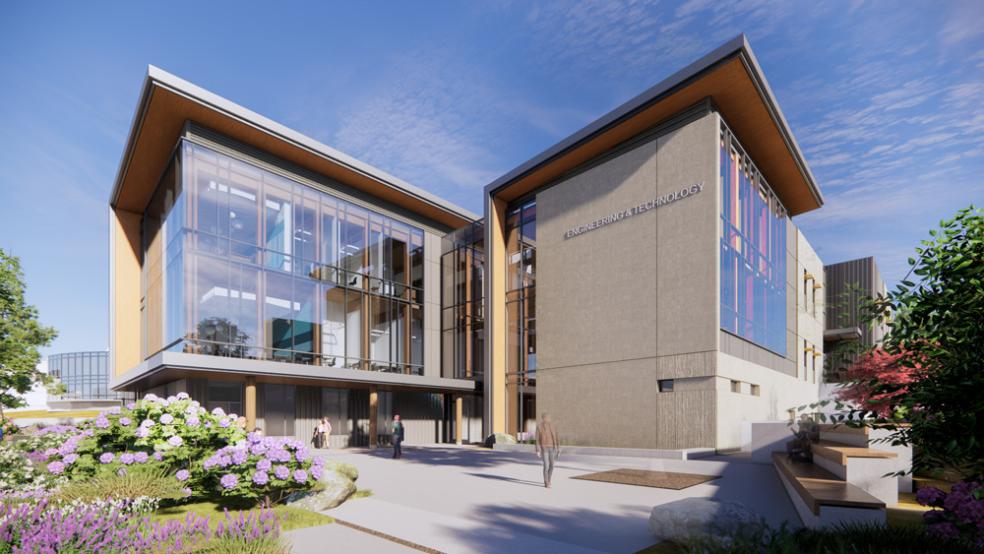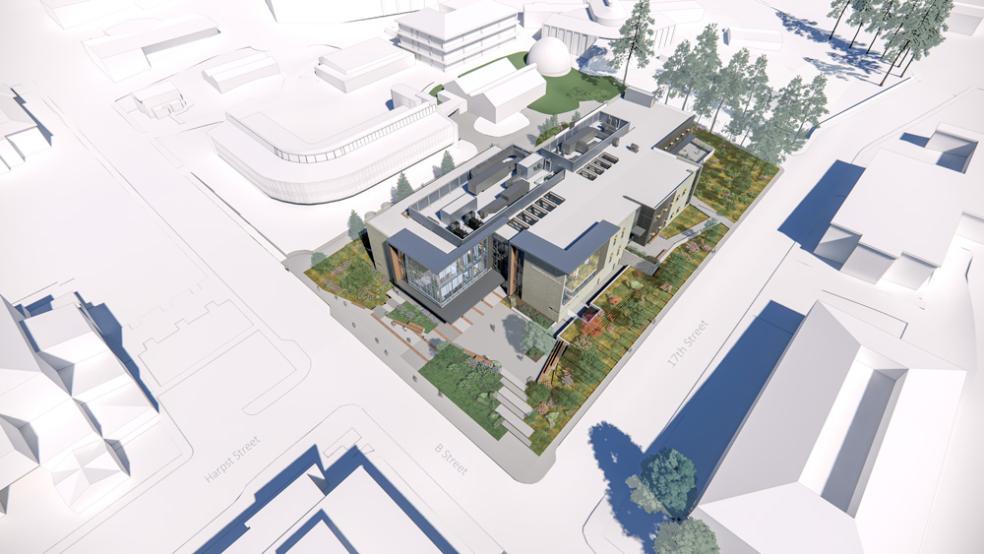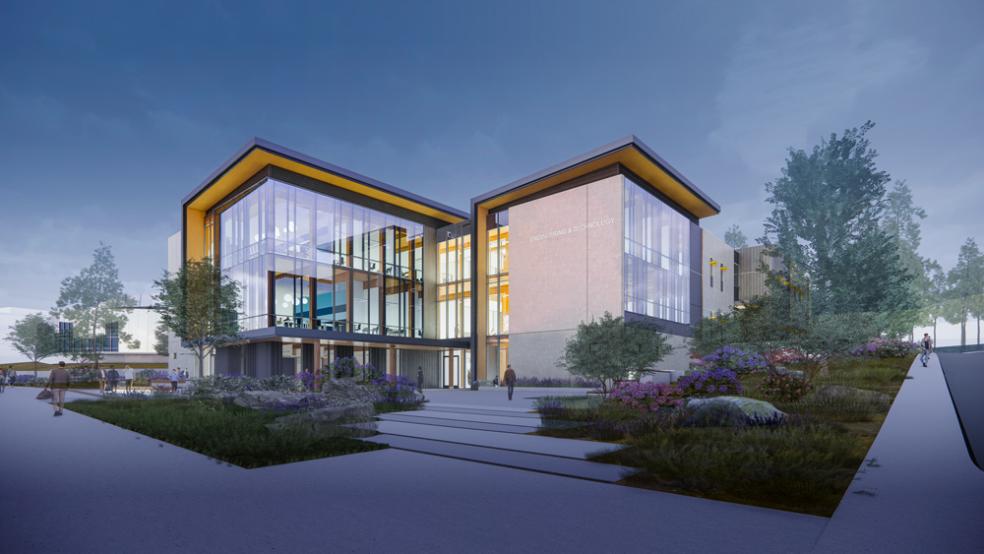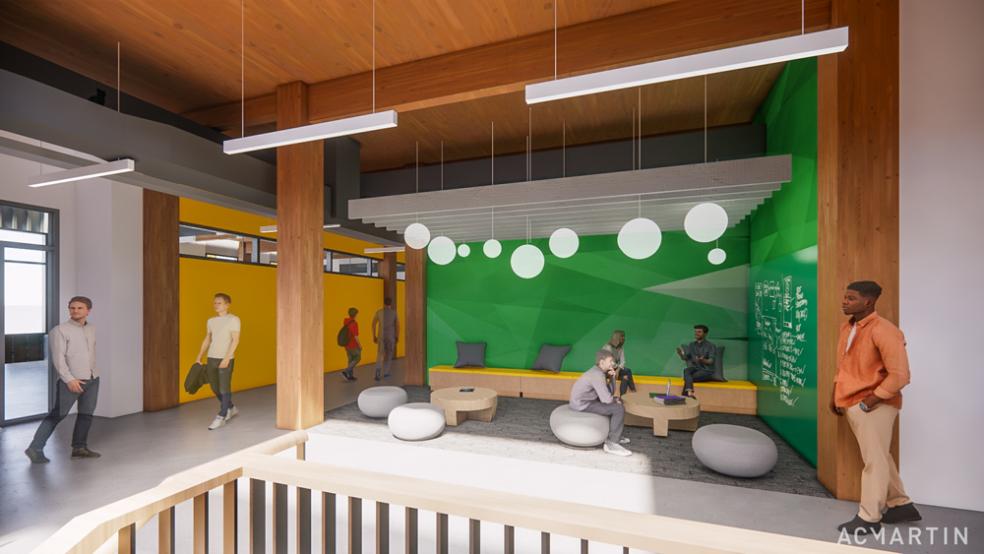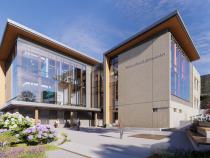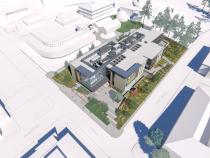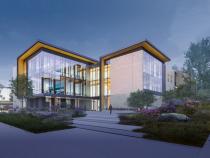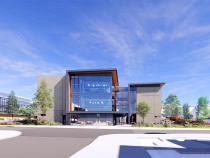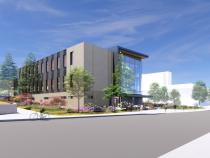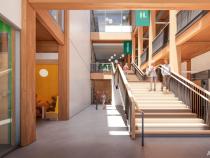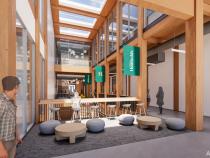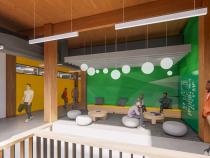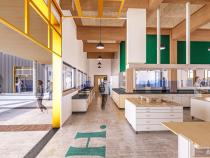The flagship building of the polytechnic transformation will be Humboldt's first major academic infrastructure project since 2008 and will emphasize student-centered learning and sustainable design.
The $100 million project was made possible with one-time funding from the historic $458 million investment in the University’s polytechnic effort approved by Governor Gavin Newsom and the State Legislature in 2021.
The 74,000 square-foot, three-story structure designed by AC Martin will be located at the northeast corner of B and 17th streets, the current site of the campus events field. Swinerton will begin construction in May 2024, with opening planned for Spring 2026.
The building will provide much-needed lab and research spaces, faculty offices, and student support spaces that promote collaboration and hands-on learning. It will house the School of Engineering and its five high-demand bachelor’s and master’s programs: Energy Systems Engineering, Engineering & Community Practice, Environmental Resources Engineering, Environmental Systems, and Mechanical Engineering. It will also accommodate the Computer Science and Software Engineering degree programs.
“The look of the University is much more than its physical structures,” says Michael Fisher, Associate Vice President for Facilities Management. “Our buildings capture the spirit of not only who we are but also where we are, and the new Engineering & Technology Building does that with its intentional design inside and out.”
The building’s innovative design is a nod to the University’s history, natural surroundings, and future as the first polytechnic in Northern California. The prominent wood and glass of the structure embraces the regional heritage and University’s character, as well as its expertise in natural resources. The design also brings the structure to street level—an adjustment that gives the building a prominent and welcoming presence while increasing the line of sight from the main entrance to campus.
Several design elements connect indoor and outdoor spaces, and will present a dramatic new presence to visitors and prospective students of campus. The west entrance plaza and north-facing connector to McCrone Hall, as well as the south-facing outdoor fabrication space towards Wildlife Lane, anchor the building and encourage a new way to access the south end of the campus.
The state-of-the-art facility will highlight the University’s long-standing commitment to sustainable practices. Rather than being made of steel, the beams are mass timber sourced from the Pacific Northwest. The structural system is estimated to provide a cost savings of $1.3 million in comparison to a more typical approach, and dramatically reduce the carbon footprint of the building when compared to steel or concrete construction This will be the University's first mass timber building.
The project is designed to achieve Leadership in Energy and Environmental Design (LEED) Gold standards. Proposed sustainability features include high-efficiency irrigation, water-efficient plumbing, and energy-efficient and Cal Green-compliant lighting and appliances. Its rooftop will have solar panels consistent with CSU Sustainability Policy and will be integrated into the future campus microgrid system.
The interior spaces reflect Cal Poly Humboldt’s vision as a polytechnic for the 21st century: a university where STEM and the liberal arts programs intersect and are grounded in practical experience for students. Designed to foster interaction across disciplines, most of the building's classrooms and labs will be used for everything from classes to meetings, allowing the facility to accommodate changing academic programs. Examples include lab rooms with overhead utilities, quick connect lab stations, and adaptable room technology.
The building will include conference rooms and gathering spaces that facilitate new ideas or collaborations. An interdisciplinary makerspace will feature wood and metal shops, project storage, and fabrication spaces. The makerspace will serve the campus at large—for example, the metal shop could produce parts for a robot in computer science, or a metal frame for a clay sculpture.
In the two years since the official polytechnic designation, the University has made significant progress to support the buildout of future polytechnic programs. This Fall, Cal Poly Humboldt welcomed eight new bachelor’s degree programs and one new master’s degree program. Additionally, the University has experienced enrollment growth for the second consecutive year, and has hired over 20 new faculty.
Last spring, the University broke ground on its historic student housing project. The new 964-student residence hall is expected to be ready for partial occupancy in 2025, increasing University-owned student housing by nearly 50%.
For more information about additional academic and infrastructure projects that the University plans as part of its polytechnic buildout, visit humboldt.edu/about/polytechnic.
